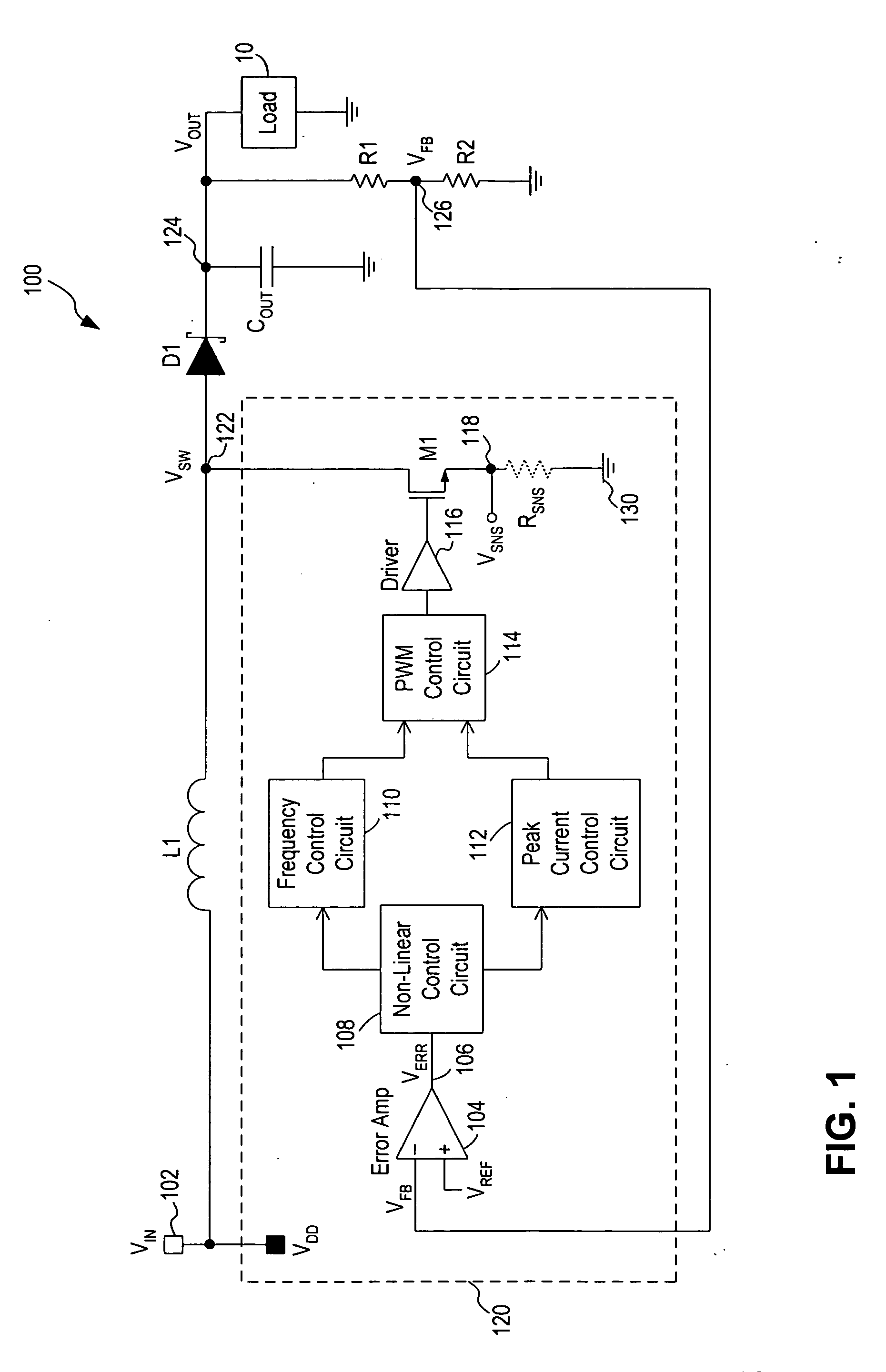PFM and current controlled switching regulator
a current control and switching regulator technology, applied in the direction of electric variable regulation, process and machine control, instruments, etc., can solve the problems of low efficiency of switching regulators at light load (low output current) conditions
- Summary
- Abstract
- Description
- Claims
- Application Information
AI Technical Summary
Benefits of technology
Problems solved by technology
Method used
Image
Examples
Embodiment Construction
[0020] In accordance with the principles of the present invention, a switching regulator operates under a combination of variable off-time control (or frequency control) and variable peak current control to achieve high efficiency at a wide range of load conditions. In operation, the frequency control and the peak current control operate in conjunction over the entire range of load conditions with the frequency control dominates at light load (or low power) conditions and the variable peak current control dominates at heavy load (or high power) conditions. In effect, the two control schemes operate in parallel and the switching regulator transitions smoothly between frequency control and peak current control, with no defined operation boundary between the frequency control and peak current control. That is, the switching regulator operates under the continuous control of both the frequency control scheme and the peak current control scheme and does not toggle between the two control...
PUM
 Login to View More
Login to View More Abstract
Description
Claims
Application Information
 Login to View More
Login to View More - R&D
- Intellectual Property
- Life Sciences
- Materials
- Tech Scout
- Unparalleled Data Quality
- Higher Quality Content
- 60% Fewer Hallucinations
Browse by: Latest US Patents, China's latest patents, Technical Efficacy Thesaurus, Application Domain, Technology Topic, Popular Technical Reports.
© 2025 PatSnap. All rights reserved.Legal|Privacy policy|Modern Slavery Act Transparency Statement|Sitemap|About US| Contact US: help@patsnap.com



